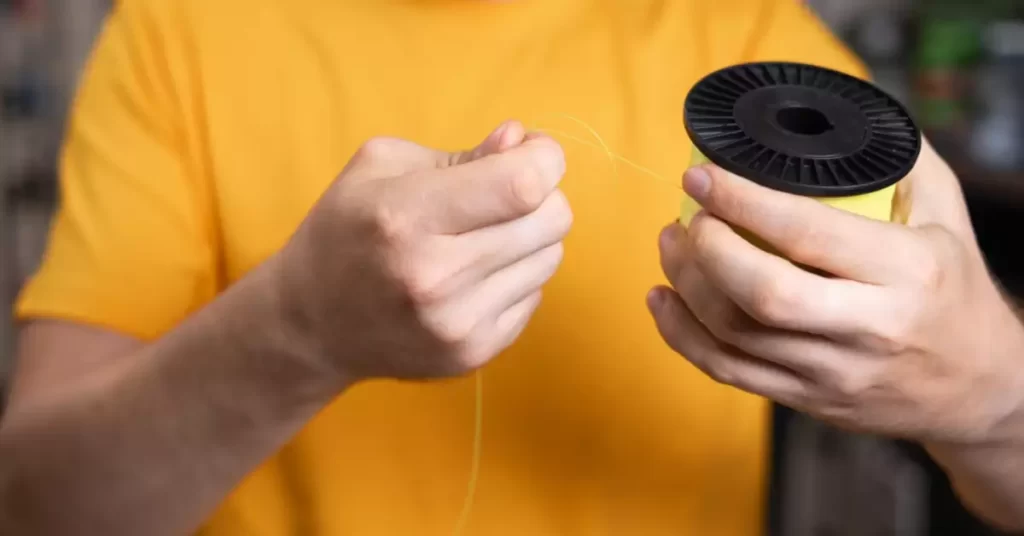Sewing is a versatile hobby that can be pursued by people of all ages and genders. It involves the use of different types of threads and needles to create beautiful and functional items such as clothing, accessories, and home decor.
However, have you ever wondered if you can sew with a fishing line? A fishing line is a strong and durable thread that is commonly used in fishing.
In this article, we will explore whether the fishing line is a suitable material for sewing, the benefits and drawbacks of using it, and how to sew with a fishing line effectively.
Benefits of Sewing With Fishing Line
Strength and Durability
One of the main benefits of using a fishing line for sewing is its strength and durability. The fishing line is designed to withstand harsh environments and extreme tension, which makes it perfect for sewing heavy-duty items such as tents, outdoor gear, and leather products.
Unlike regular threads, the fishing line does not break easily, ensuring that your sewing projects remain intact for a long time.
Water-Resistance
Another advantage of using a fishing line for sewing is its water-resistant properties. The fishing line is designed to resist water, making it an excellent choice for sewing items that are exposed to moisture such as swimwear, raincoats, and outdoor gear.
Additionally, the fishing line does not absorb water, which helps to prevent mold and mildew from developing on your sewing projects.

Drawbacks of Sewing With Fishing Line
Limited Color Options
One of the main drawbacks of using a fishing line for sewing is its limited color options. Fishing line is primarily available in clear or translucent colors, which can make it challenging to match with fabric colors.
While some manufacturers offer colored fishing lines, the range of colors available is still limited.
Prone to Tangling
Another disadvantage of using a fishing line for sewing is its tendency to tangle easily. Due to their stiffness and strength, fishing lines can become tangled when you are sewing, making them difficult to work with.
Additionally, untangling fishing lines can be time-consuming and frustrating, which can lead to decreased productivity.
How to Sew With Fishing Line
Choose the Right Needle
When sewing with a fishing line, it is essential to choose the right needle. The fishing line is thicker and stiffer than regular thread, which means that you need a needle with a larger eye and a sharp point.
A leather needle or a denim needle is an excellent choice for sewing with a fishing line.
Use the Correct Tension
Sewing with a fishing line requires a different tension setting on your sewing machine than regular thread.
It is best to use a lower tension setting to prevent the fishing line from snapping while sewing.
Additionally, sewing slowly and steadily can help to prevent the fishing line from tangling or breaking.
Avoid Knots
When sewing with a fishing line, it is best to avoid knots. Knots can weaken the fishing line and cause it to break easily. Instead, use a backstitch or a lock stitch to secure your sewing.
FAQs
Is the fishing line stronger than the regular thread?
Yes, the fishing line is stronger than the regular thread. The fishing line is designed to withstand harsh environments and extreme tension, which makes it perfect for heavy-duty sewing projects.
What is the best fishing line to use for sewing?
The best fishing line to use for sewing is a monofilament fishing line. Monofilament fishing line is strong, durable, and resistant to water.
Can you use a fishing line for hand-sewing?
Yes, a fishing line can be used for hand-sewing. However, it can be challenging to work with due to its stiffness and tendency to tangle.
Conclusion
In conclusion, sewing with a fishing line is possible, but it has both benefits and drawbacks. The fishing line is strong, durable, and water-resistant, which makes it an excellent choice for heavy-duty and water-resistant sewing projects.
However, fishing line is limited in color options, prone to tangling, and requires special techniques to sew effectively.
To sew with a fishing line, you need to choose the right needle, use the correct tension, and avoid knots.
With these tips in mind, you can experiment with using a fishing line for sewing and take advantage of its unique properties.